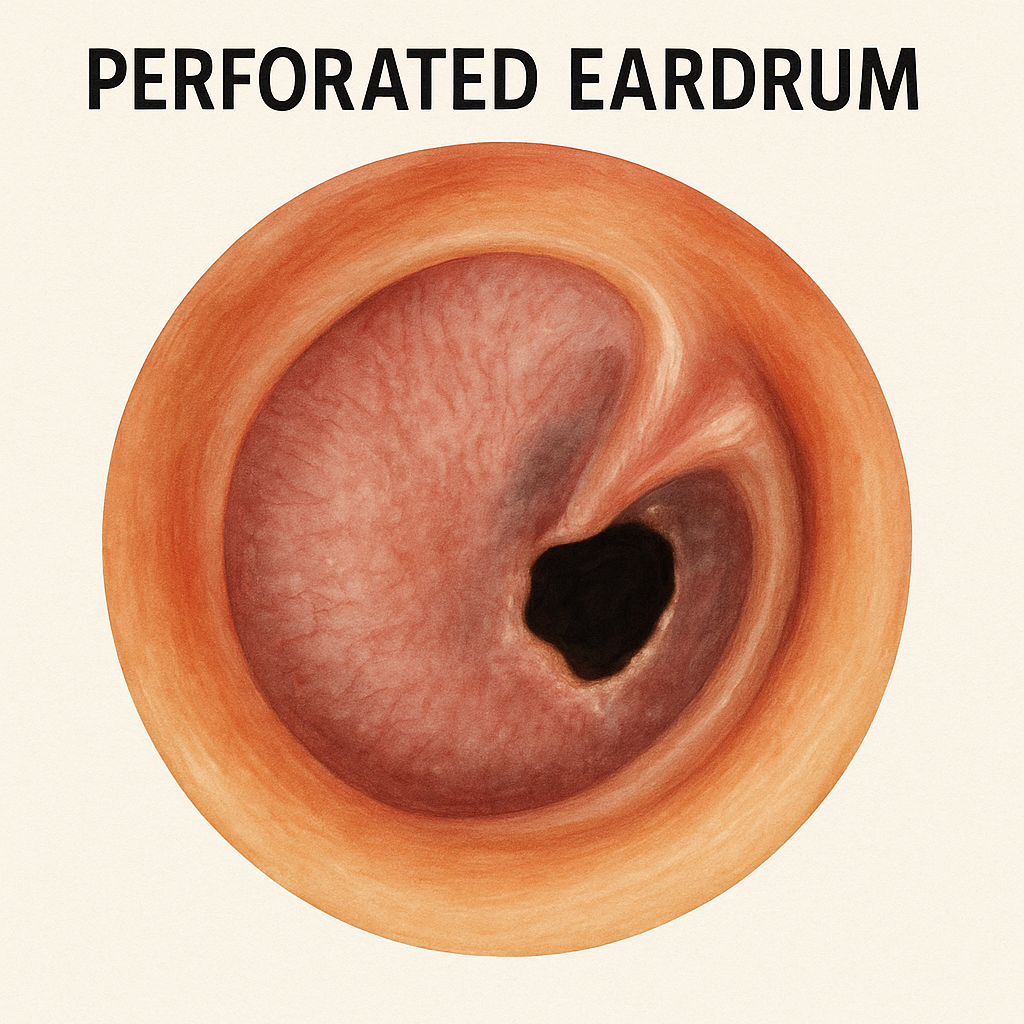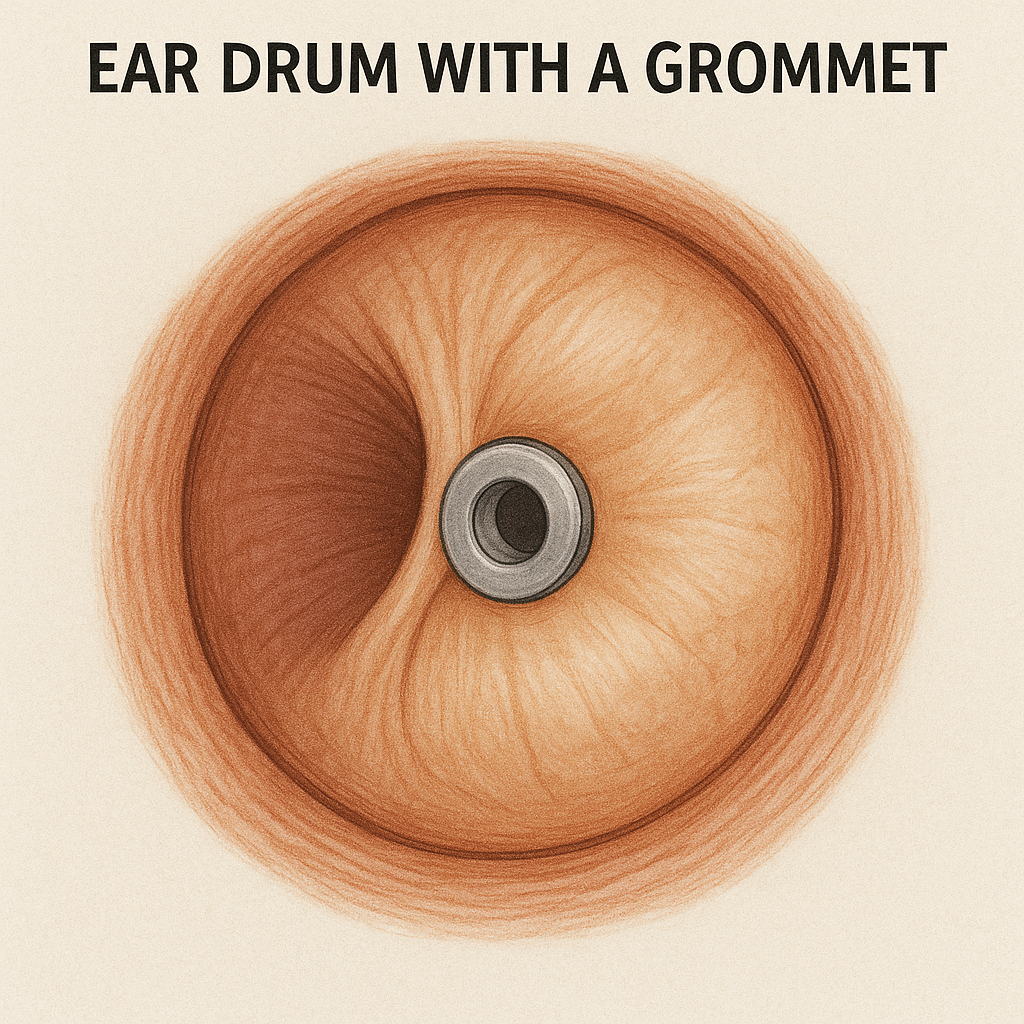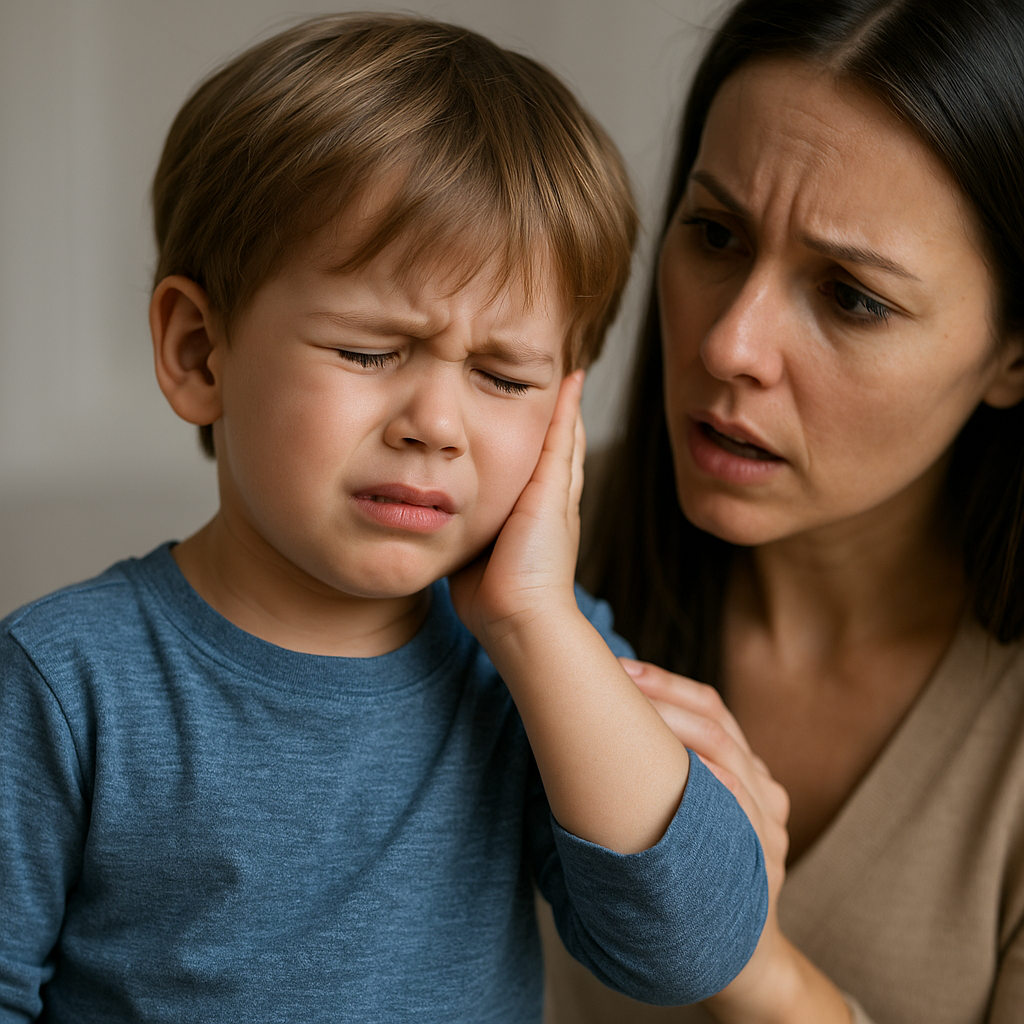Introduction
Are you wondering, “Why does my child keep getting ear infections?” Chronic ear infections in children are common and frustrating. This guide covers the main causes, when to seek help, and practical steps you can take right now.
1. Why Are Chronic Ear Infections So Common in Children?
- Fluid buildup due to anatomical differences: Children’s Eustachian tubes are shorter, more horizontal, and less efficient at draining fluid. This increases the risk of recurrent infections.
- Immature immune systems: Developing defenses make it harder for children to eliminate viruses and bacteria.
- Adenoid-related infections and blockages: Enlarged or infected adenoids often trap bacteria, leading to Eustachian tube obstruction and recurring ear problems.
2. Types of Chronic Ear Infections

- Chronic Otitis Media with Effusion (Glue Ear): Persistent fluid without an active infection—can affect hearing and increase infection risk
- Chronic Suppurative Otitis Media (CSOM): Ongoing infection and discharge through a perforated eardrum—risk of serious complications like hearing loss or intracranial infection
3. Effective Treatment Options: From Home Care to Surgery
a. Home Care & Prevention :
- Breastfeeding & proper feeding posture: Reduces fluid flow into the Eustachian tubes.
- Avoid secondhand smoke and maintain hygiene: These prevent upper respiratory infections that can trigger ear issues.
- Vaccination and hand hygiene: Limits illnesses that often lead to ear infections.
b. Medical Management:
- Watchful waiting vs. antibiotics: Depending on age and severity, antibiotics may be used right away or delayed—always follow your pediatrician’s guidance.
- Ear drops & cleaning for CSOM: Topical treatments and diligent ear hygiene can be effective.
c. Surgical Interventions:

- Tympanostomy tubes (“ear tubes”): Widely used, these improve drainage, reduce infections, and improve hearing.
- Myringotomy (with or without laser): Small incision to drain fluid; sometimes used before tube placement.
- Adenoidectomy: Removing the adenoids can improve outcomes for children with chronic infections, particularly when tubes alone aren’t enough.
- Advanced procedures (tympanoplasty or mastoidectomy): Required for chronic perforations or cholesteatoma to clear disease and restore ear health.
4. When to Seek Professional Help
Ask: “When should I worry about my child’s ear infections?”
- Recurrent infections (e.g., 3+ in 6 months or 4+ in a year)
- Persistent fluid or hearing concerns
- Signs of CSOM such as discharge or persistent pain
In these cases, referral to an ENT specialist is key for hearing evaluation and further management.
5. Long-Term Outlook & What to Expect
- Most children outgrow chronic ear infections as their anatomy changes and immunity matures.
- With appropriate interventions, hearing typically improves and future infections decrease.
- Untreated CSOM may lead to complications; early detection and treatment are crucial.
6. FAQ Section for Voice Search Optimization
Q1: What causes chronic ear infections in kids?
A: Mainly fluid buildup due to immature anatomy and immune systems, often worsened by adenoid problems.
Q2: Can chronic ear infections affect hearing?
A: Yes—persistent fluid and infection can lead to hearing loss, speech delays, and learning challenges.
Q3: Do ear tubes help?
A: Absolutely—they allow drainage, improve air flow, and reduce the frequency of infections.
Q4: Are surgeries like adenoid removal necessary?
A: In recurring cases not improved by tubes, adenoidectomy often helps by reducing obstruction and infection sources.
Q5: How can I prevent my child from getting ear infections?
A: Encourage breastfeeding, keep away smoke, ensure vaccinations, maintain hygiene, and feed in an upright position.
Conclusion
Don’t let chronic ear pain affect your child’s quality of life.
If your child is experiencing recurring ear infections, it’s time for a professional evaluation. Our expert ear specialist at The ENT Dr. provides comprehensive diagnostic and treatment solutions to bring your child lasting relief.


Comments are closed